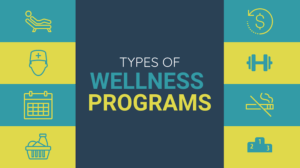Contents
- 1 How to Design An Employee Wellness Program?
- 1.1 Conduct health assessments
- 1.2 Get support from Management
- 1.3 Assemble a Wellness Committee
- 1.4 Set goals for the benefit of company and workforce
- 1.5 Set a budget
- 1.6 Design the components of the Wellness program
- 1.7 Offer Wellness Program Incentives
- 1.8 Follow Strategic Communication
- 1.9 Evaluate the effectiveness of the program
- 2 What are the benefits of an employee wellness program?
- 3 A Word From MantraCare
How to Design An Employee Wellness Program?
Employees often forget or ignore their health. Hardworking employees often overwork and do not exercise or eat healthy because of lack of time. They skip food and overwork to an extent that it starts affecting their health and eventually their work. This may seem admiral in the beginning but it is harmful for both the employee and the employer in the long term. Here is a guide to how to design a wellness program and it’s benefits.
It is very clear that a person with good health performs better, work more effectively than a person who is unhealthy. An employee does not need to have a serious physical illness to be unhealthy, it could be stress, bad mental health, fatigue, that may cause huge disturbance in the employees work.
That is why most of the companies incorporate into employee wellness programs. Being physically and mentally fit makes employees do good at their job. Most of the companies and employers understand this and offer their employees “employee wellness programs.”
Although there’s been debate about whether the employee wellness program works or not?. The honest answer is that if designed in a good manner while keeping the needs of employees in mind, they do work very well. Not only do they benefit employees but also promote the growth of the organization. So here is the guide to how you can design the best employee wellness program that gets successful.
Conduct health assessments

This is the most crucial step in designing a wellness program that will benefit the employees and company. Obtain information about the health of the employees and ask them for the solutions to improve it. This information will help you design a wellness program and include services that fulfill the needs of your workforce. Surveying employees directly can help evaluate the current situation as how the wellness program might be received. You can include a variety of questions and survey topic areas like employees’ personal wellness interests, health risk assessments etc.
Employers can also add questionnaires about basic health problems that employees face due to smoking, lack of exercise and stress at the workplace.
These surveys are usually completed after screening blood pressure, cholesterol, height/weight, and blood glucose levels. However, just assessing the health of the employees alone will not change anything. Unless the workforce is given the tools and resources to change their behavior.
Get support from Management
 Support from management is essential for designing a successful wellness program. To gain management support, inform managers about the program and its benefits. Communicating the current programs or services that are available in the workplace with managers and the impact of wellness programs can help your seniors evaluate the situation. Try to indulge the senior managers into wellness sessions. It will encourage other team members or the workforce to participate as well. Designing an effective wellness program will only work if most of the people in the office are participating in the activities.
Support from management is essential for designing a successful wellness program. To gain management support, inform managers about the program and its benefits. Communicating the current programs or services that are available in the workplace with managers and the impact of wellness programs can help your seniors evaluate the situation. Try to indulge the senior managers into wellness sessions. It will encourage other team members or the workforce to participate as well. Designing an effective wellness program will only work if most of the people in the office are participating in the activities.
Assemble a Wellness Committee
After conducting a health assessment and obtaining management support, an employer can establish a wellness committee. A wellness committee is an internal committee formed among employees that helps in executing wellness programs in the office. A wellness committee promotes and organizes wellness sessions, activities and relays the important information to the managers and employees.
Employers may want to communicate about how long the committee will work and how new members selection process will work. Employers may want to alternate committee members if the workload is too much. A wellness committee is highly beneficial in operating and promoting wellness activities.
The wellness committee can also elect a coordinator for a more effective and successful program. A wellness coordinator will need to take responsibility for the whole program and communicate and solve problems among managers and employees. The coordinator can be approached from outside and hired for the role.
Set goals for the benefit of company and workforce

After gathering the information on what kind of wellness program can benefit the employees, employers can set the goals and objectives that will benefit the company and employees. Of course, the main objective behind designing a wellness program is improving the health of employees. But other goals like reducing absenteeism, promoting employee retention, boosting productivity are long-term accomplishments that a wellness program should achieve. For example, a wellness program that provides counseling and required tools to help employees quit smoking is expected to reduce the number of employees who smoke by 10% within 2 months. Helping 5 % of obese employees every 4 months can be another goal of the weight loss employee wellness program.
Set a budget
Establishing a budget is a crucial step in designing a wellness program. Without funding, it is rather impossible. While establishing a budget, employers need to keep several things in mind like marketing, program design, incentives, etc. A typical wellness budget will include wellness program provider charges, incentives for participating and achieving health goals, promotions, pedometers/fitness trackers, etc. Apart from money, a program will need a lot of time from HR representatives and committee members.
There are some other steps that employers may want to consider for hidden funding resources.
- Check out if the health Insurance premiums already include wellness program costs.
- If you are low on budget, consider low or no-cost activities such as a group activity or walking after lunch.
- Consider free community resources or programs to supplement the wellness program
- Conduct surveys to determine if employees are willing to pay for some part of a wellness program like physiotherapy, exercise classes, etc.
Design the components of the Wellness program

After the risk assessment, the employer will figure out what kind of wellness program will benefit the employees. The wellness program varies from a simple program to a multi-prong program. It is important to include a variety of components that target the needs and interests of the employees. This step of designing a wellness program is determined on the basis of evaluation obtained from all the previous steps of organizational assessment.
Some examples of common programs are as follow-
- Stress reduction program
- Weight loss program
- Smoking cessation programs
- Yoga/Exercises programs
- Vaccination clinics
Offer Wellness Program Incentives
Changing life-long habits is not easy, employees need to feel motivated enough to bring healthy changes in their life. Some organizations offer money for participating in wellness programs, however, that is not so effective. Smart incentives generate a drive of participation, increase employee engagement and motivation to achieve self-determined health goals.
The challenge is to design a wellness program in such a way that the new habits and activities are sufficiently satisfying and worth maintaining to bring the change. For example, meditating, or walking daily can be tough things to do regularly. But if the programs are being run in groups and employees get reward for it as well, then they are likely to participate. Research has found out that employees who perform a workout activity daily feel more positive and productive throughout the day. Employees feel even better if they are praised for even the smallest achievements at the workplace.
Follow Strategic Communication

Communicating plays a key role in implementing a successful wellness program. Good communication is one of the critical steps to design a wellness program that will work. This is a marketing step that will communicate the organization’s wellness policy to the employees. The policy statement includes the organization’s intent, participation level, incentive system with respect to wellness plans. Communicating in the right way can ensure increase in the participation. It create a culture in the office where being healthy is important. This is achieved in many ways, like creating a slogan or logo that spreads the message of program components. For example, ‘Thursday for Tai Chi’. ‘Wednesday is a yoga day’ etc.
Communicating with higher authorities about the same and getting them to participate can further increase the chance of the program to work. Communication brings engagement which is important to design a successful wellness program.
Evaluate the effectiveness of the program
A successful wellness program can only become successful when your employees are revising and evaluating the effectiveness of the wellness program. Employers should keep a track of any wellness initiative, for example, measuring participation rate, reduction in healthcare costs, percentage of employees who benefitted from the program, etc. Regardless of how well designed a wellness program is, evaluating the effectiveness of the wellness program is an important step in managing the wellness program well.
What are the benefits of an employee wellness program?
Employers should consider implementing an employee wellness program for various reasons but the most important are-
- It reduces ever-increasing healthcare cost
- Reduces absenteeism
- Increases productivity or employees
- Boosts employee morale and loyalty
- Reducing worker’s compensation
- Lower disability-related costs
- Achieve employee resilience
Designing an employee wellness program well is an important step in improving the health and productivity of employees and improving the overall environment of the workplace.
A Word From MantraCare
Do you want to keep your employees happy, healthy, and productive? Join our employee assistance program and get a healthier workplace.


